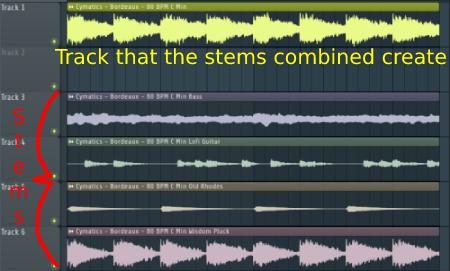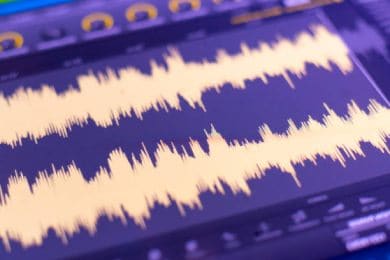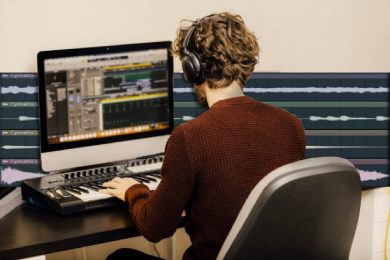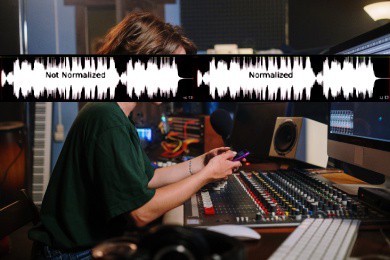You may have heard of steams or have even seen them in some sample packs, but what are they and how are they used?
In music production, a stem is an individual or grouped collection of audio sources mixed together, to be used later as one unit. A single stem may be delivered in mono, stereo, or in multiple tracks for surround sound.
Stems have been commonly used by audio engineers who send premixes to clients for approval before entering full production. This is done so that the client can hear how their mix sounds without having to deal with individual tracks too much.

This article will explain the different uses of pre-mixed stems, how to correctly use them and what kind of audio can be mixed into a single stem.
Types of Stems
There are three main types of stems to consider: pre-dubbed, premixed, and sub-mixes (separately summed elements).
Pre-Dubbed Stems
These are stems that have been recorded live by the musicians to be used as they were performed, without any further mixing.
These will usually come at various volume levels (levels of loudness between very quiet and very loud) so the engineer can pick which strength is suitable for their mixed situation.
The downside to these stems is that if you want all of them available you’ll need a large number of tracks to work with, and if they come in stereo you’ll be using twice the space for a single track.
Pre-Mixed Stems
This set of stems will have been mixed together by an engineer or mixer before delivery. The most common kind of pre-mixed stem is a “stemmed premix” which will usually come with a range of different stem types within it (sometimes all the same, most common being drums, bass, and vocals).

These are often delivered in this fashion so that the mixing engineer can bring them into their own session for further processing.
You may also see “stemmed stereo files” which are exactly what they say on the tin – every individual source tagged as left or right but not actually mixed together.
Submixes (Separately Summed Elements)
These are all of the different groups of audio that make up a piece of music, each rolled into its own track. The most common example is drums – kick drum, snare top and bottom, hi-hat, ride… you get the idea!
These sub-mixes will usually go deep so for drums you’ll probably see seven or eight sub-mixed tracks (kick/sub-kick, kick/snare, bottom/top, etc). If there are any effects on these grouped elements they will be included too.
How Are Stems Used?
How stems are used depends on your workflow and your preferences. In a typical mix session, stems are used for one or more of the following purposes:
- To control how loud each track is.
- To give producers and clients control over how their tracks sound.
- To allow each element in a mix to be treated independently (e.g eq/compression) or processed using plugins such as reverbs etc. (usually done so that the producer/client can hear how their mix sounds without having individual tracks breaking them up too much).

But, here are some of the most commonly employed methods:
End Of The Mix
This is the most typical use of stems. Here, each stem will go through to a bus and some or all of them will be brought upon their own channels in the mix.
If you’re using this technique then you’ll probably want some way of controlling how loud each track is (trim plugin on every track? No thanks!).

If you only have one stereo bus available for your mix you could bring both sides up together and pull down any elements which get too dominant (kick, lead vocals).
But, there’s always the danger that if one side gets turned down slightly too much it can unbalance your mix and make it feel weak. Having an aux bus gives more control over each stem and allows for better trimming.
In Mono
If you’re not worried about width then it could be worth running a few stems in mono to get a bit more punch out of your mix.
Keeping the mix sounding wide can be quite hard work sometimes so if you’ve got enough available power why not make use of it?

You’ll need your DAW to have flexible routing as well as aux busses to do this – analog consoles often have built-in summing amps which can help things along nicely.
More Than One Stereo Bus
The most common example here would be drums, bass, and vocals each going through their own stereo bus. This is great for making room within the mix for each element, especially when they are all competing for space in the same areas.
No Busses
Some people prefer to keep everything separate and deal with each stem on its own – usually means more work but it can be nice to have the freedom to do whatever you want with each part without having any limitations imposed by other elements.
Combination of Both Mono and Stereo
This would be stems sent through a mono bus as well as an aux channel so that they could benefit from some group processing (e.g eq/compression), or treatment using plugins such as reverbs, etc.

It’s good practice to use both otherwise your mix may lack balance and cohesion.
Since we’re not dealing with tracks here we don’t need to worry about panning (though it’s still worth doing), widening (useful for certain elements that are panned dead center but can be up to the discretion of the mixer), or positioning in the stereo field (not relevant here unless you’re also bringing stems into a mid-side plugin).
In A Sub-mix
This is where everything gets mixed down into one track, often referred to as a “stemmed premix”, and then further processing takes place on this sub-mix.
This is usually done so that the producer/client can hear how their mix sounds without having individual tracks breaking them up too much.
The downside is there’s no way to change anything after this point which may not be what they want.
Are Stems And Trackouts The Same?
Yes and no! Trackouts are a way of exporting each track as an individual file. Stems, on the other hand, are a group of combined tracks intended to be treated together – either mixed down into a single track for sub-mixed delivery or left as they are if you’re planning on doing your mix in the box.
Summary
So that’s a bit of an insight into what stems are in music production.
The way you use them is up to you but once you get your head around the idea it can help give you more control over your mix and take away some of the stress of having to deal with lots of tracks at once!

